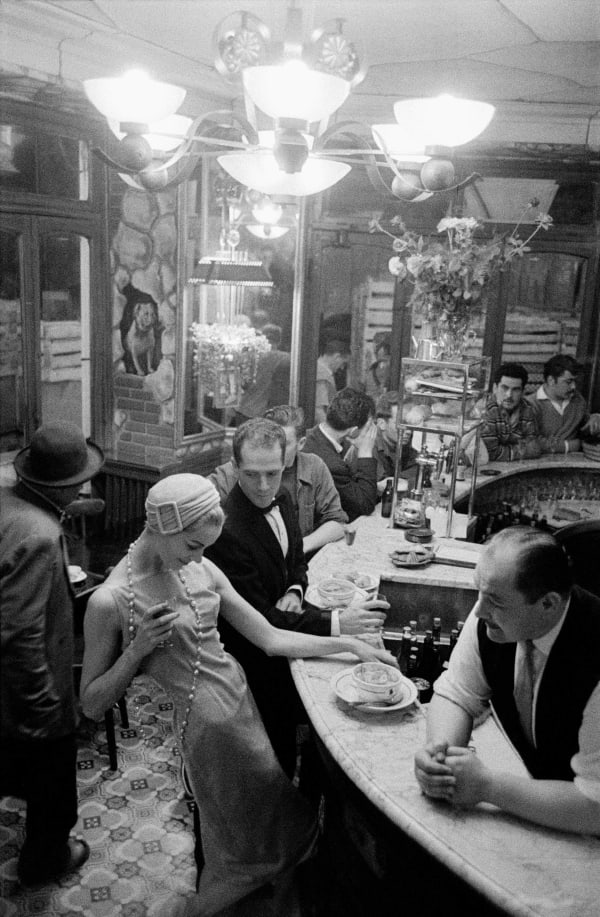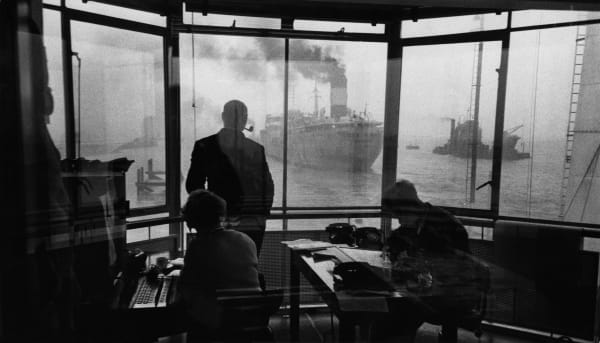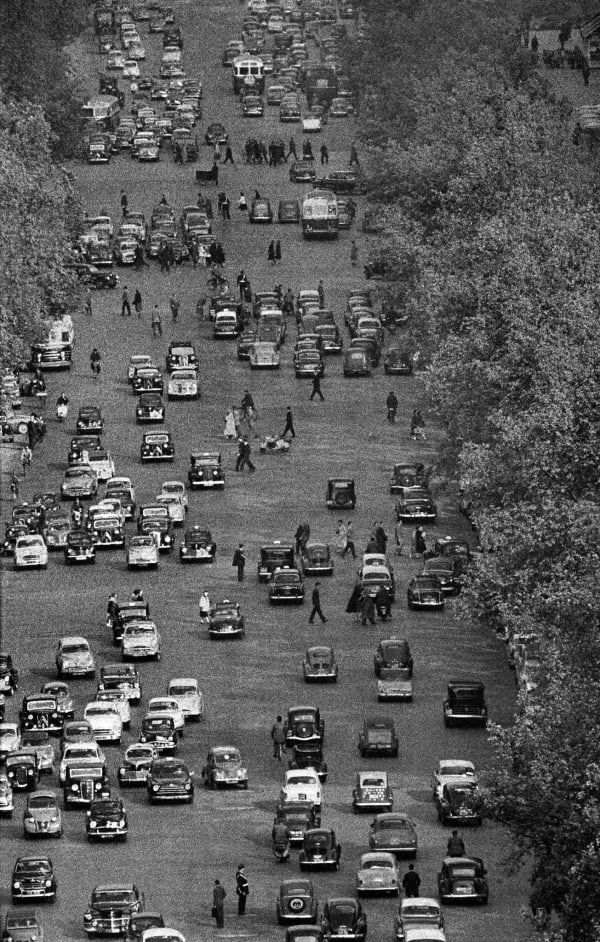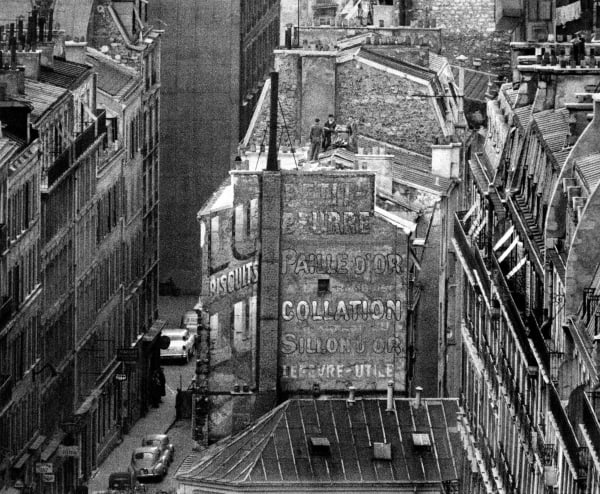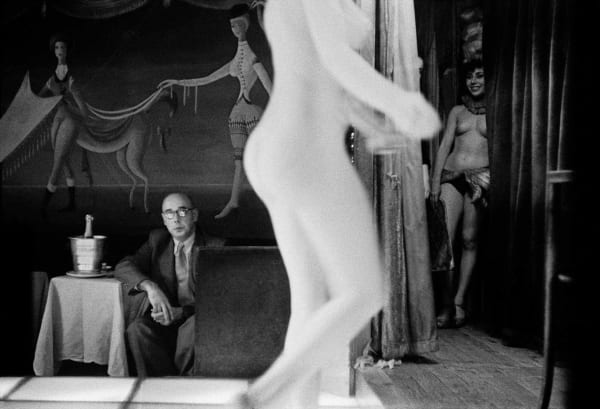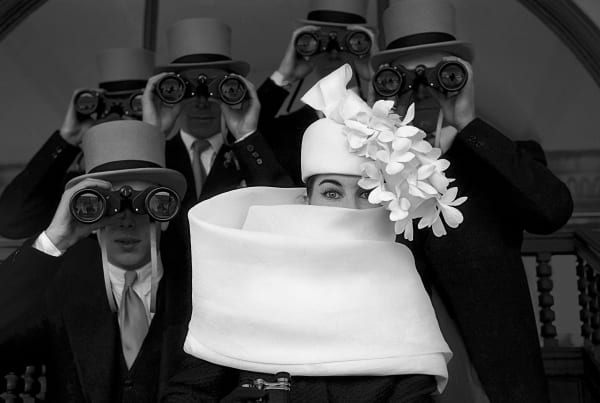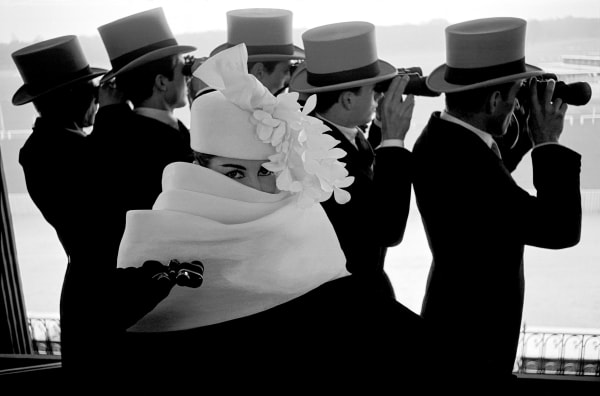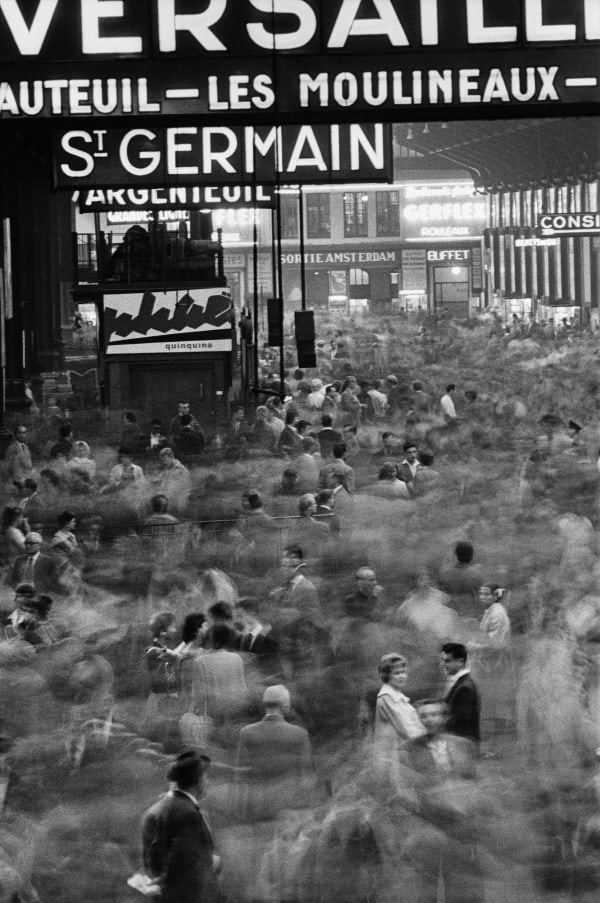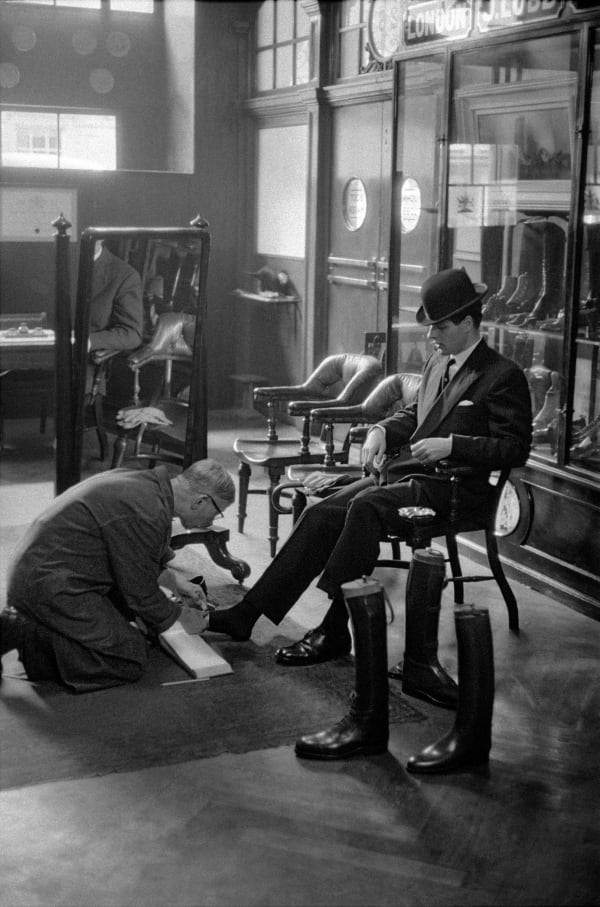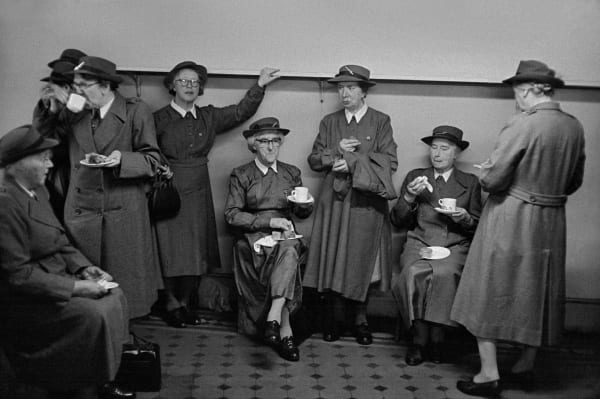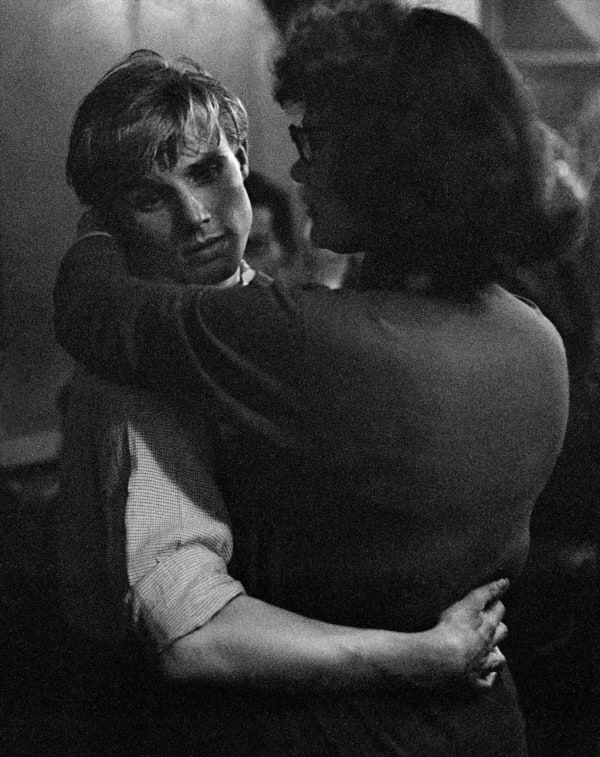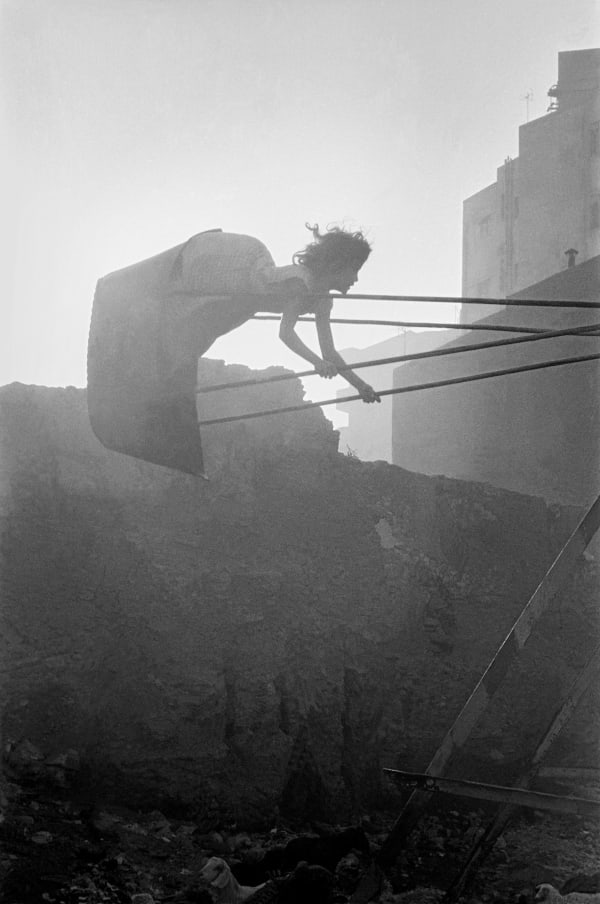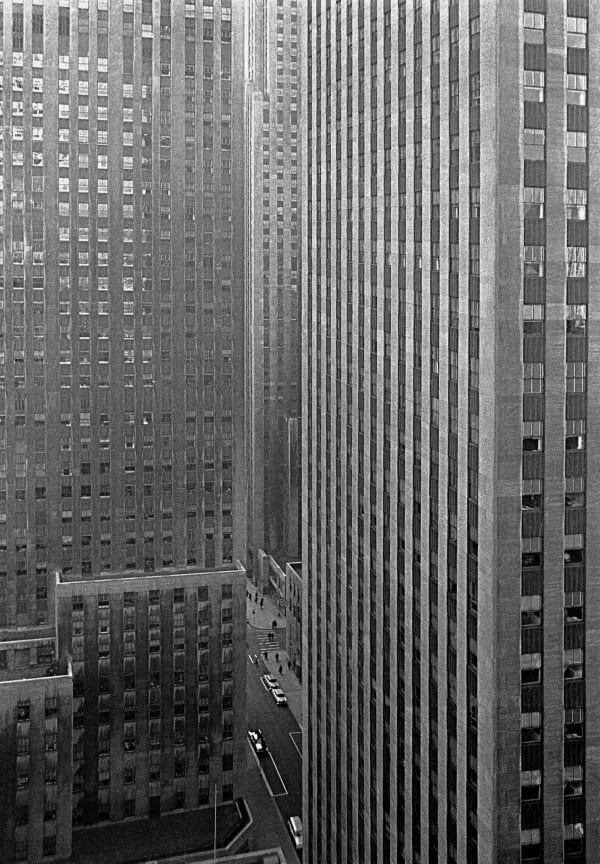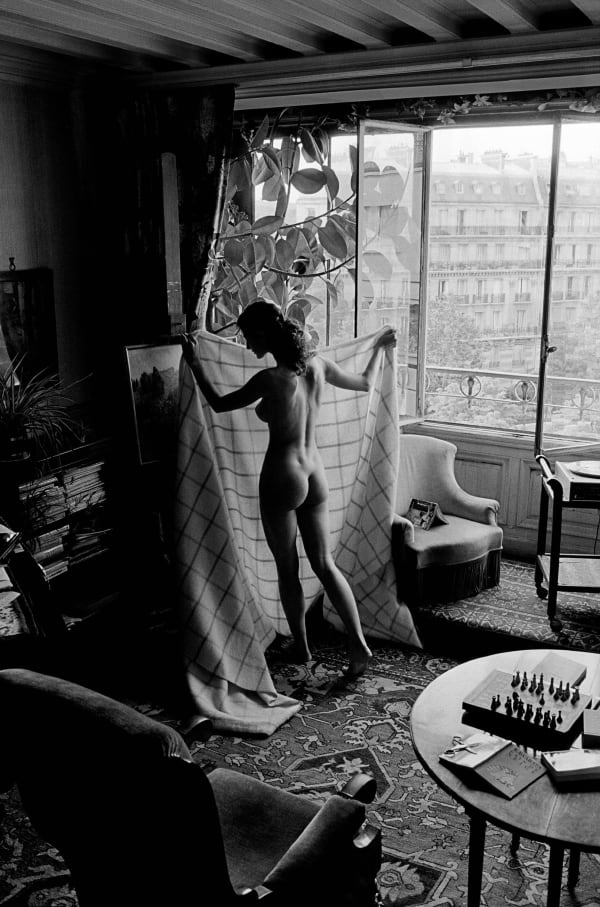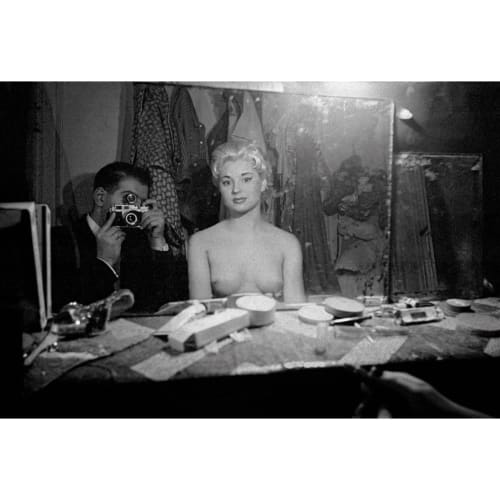Frank Horvat Italian, 28/04/1928-21/10/2020
Series
Works
-
 Manchester Ship Canal, United Kingdom, 1955.
Manchester Ship Canal, United Kingdom, 1955. -
 Boxing boys, Lambeth, London, 1955.
Boxing boys, Lambeth, London, 1955. -
 Old advertising and bare tree, Paris, 1955.
Old advertising and bare tree, Paris, 1955. -
 Place Beaubourg (Before the Museum), Paris, 1955.
Place Beaubourg (Before the Museum), Paris, 1955. -
 Champs Elysées, Paris, 1956.
Champs Elysées, Paris, 1956. -
 Place de l'Étoile neighborhood, Paris, 1956.
Place de l'Étoile neighborhood, Paris, 1956. -
 Little girl, Saint Michel, Paris, 1956.
Little girl, Saint Michel, Paris, 1956. -
 Le Sphynx (Self-portrait with a stripper), Paris, 1956.
Le Sphynx (Self-portrait with a stripper), Paris, 1956. -
 Le Sphynx, Paris, 1956.
Le Sphynx, Paris, 1956. -
 Le Sphynx, Paris, 1956.
Le Sphynx, Paris, 1956. -
 Tan Arnold at Le chien qui fume, Paris, 1957.
Tan Arnold at Le chien qui fume, Paris, 1957. -
 Givenchy Hat A, Paris, 1958.
Givenchy Hat A, Paris, 1958. -
 Givenchy Hat B, Paris, 1958.
Givenchy Hat B, Paris, 1958. -
 Givenchy Hat C, Paris, 1958.
Givenchy Hat C, Paris, 1958. -
 Coco Chanel watching her fashion show, Paris, 1958.
Coco Chanel watching her fashion show, Paris, 1958. -
 Gare Saint Lazare, Paris, 1959.
Gare Saint Lazare, Paris, 1959. -
 Customer at Lobb's shoe shop, London, 1959.
Customer at Lobb's shoe shop, London, 1959. -
 Ladies of the Salvation Army, London, 1959.
Ladies of the Salvation Army, London, 1959. -
 Dancing couple in Soho, London, 1959.
Dancing couple in Soho, London, 1959. -
 High Fashion with Deborah Dixon on the steps of Piazza di Spagna, Roma, for Harper's Bazaar, 1962.
High Fashion with Deborah Dixon on the steps of Piazza di Spagna, Roma, for Harper's Bazaar, 1962. -
 High Fashion with Carol Lobravico at Café de Flore, Paris, for Harper's Bazaar, 1962.
High Fashion with Carol Lobravico at Café de Flore, Paris, for Harper's Bazaar, 1962. -
 Swinging girl, Cairo, Egypt, 1962.
Swinging girl, Cairo, Egypt, 1962. -
 View of Rockefeller Center, New York City, 1963.
View of Rockefeller Center, New York City, 1963. -
 Shoes and Eiffel Tower for Stern, Paris, 1974.
Shoes and Eiffel Tower for Stern, Paris, 1974. -
 Alessandra Ferlini for Vogue Italia, Paris, 1986.
Alessandra Ferlini for Vogue Italia, Paris, 1986.
Biography
Frank Horvat (1928-2020) stands as one of the most influential photographers of the 20th century, a master who revolutionized fashion photography while building an extraordinarily diverse body of work that spanned photojournalism and portraiture.
His career, marked by constant innovation and artistic courage, transformed how we understand the relationship between documentary and staged photography.
Early Life and Formative Years
Born Francesco Horvat on April 28, 1928, in Abbazia, Italy (now Opatija, Croatia), Frank came from a distinguished Central European Jewish family. His father, Karl, was a Hungarian physician, while his mother, Adele, was a psychiatrist from Vienna. This intellectual environment would profoundly influence his artistic sensibilities and analytical approach to photography.
The rise of fascism in Italy forced the family to flee to Switzerland in 1939, when Frank was just eleven years old. They settled in Lugano, where Frank discovered his passion for photography at age fifteen by trading his postage stamp collection for a 35mm Retinamat camera. This simple exchange would mark the beginning of a legendary career.
In 1947, Frank moved to Milan to study art at the Accademia di Brera, initially working in advertising before fully committing to photography. His early experiences as a displaced person navigating different cultures would later inform his unique perspective as a photographer who understood the power of visual storytelling to bridge worlds.
The Pivotal Paris Meeting
The trajectory of Horvat's career was forever altered by a fateful meeting in Paris in 1950 with Henri Cartier-Bresson, the legendary French photographer. Initially dismissive of Horvat's work, Cartier-Bresson advised him to study the paintings of Poussin for composition and suggested he choose between being "a simple witness" or staging photography like Richard Avedon, warning against mixing both styles.
Fortunately, Horvat ignored this advice. Following Cartier-Bresson's recommendation to use a Leica camera, he embarked on a transformative two-year journey through Pakistan and India as a freelance photojournalist. This expedition proved pivotal, producing images that would be published in prestigious magazines like Life, Réalités, Match, and Picture Post.
One photograph from this period - an Indian bride under a veil, her face reflected in a mirror on her lap - was selected by Edward Steichen for the groundbreaking The Family of Man exhibition at the Museum of Modern Art, which toured globally and was seen by nine million visitors. This early recognition established Horvat as a photographer of exceptional sensitivity and technical skill.
Revolutionary Fashion Photography
In 1955, Horvat settled in Paris and began what would become his most celebrated contribution to photography. Unlike his contemporaries who worked primarily in studios, Horvat took his models onto the streets, into the metro, to racetracks, and onto rooftops. This radical departure from conventional fashion photography created a new visual language that combined the spontaneity of photojournalism with the glamour of high fashion.
His approach was revolutionary for several reasons. First, he used natural light and real locations, bringing fashion into dialogue with everyday life. Second, he employed a 35mm camera when most fashion photographers used larger formats, allowing for greater mobility and spontaneity. Third, he directed his models to avoid artificial poses, famously instructing them to "Please don't smile".
"Without stories to tell, fashion would never have really interested me," Horvat explained during a retrospective of his work. His models were not static mannequins but dynamic characters inhabiting real spaces, creating images that felt alive and authentic. This approach earned him commissions from the world's most prestigious fashion magazines, including Vogue, Elle, and Harper's Bazaar.
His 1956 series of strippers shot al Le Sphinx, in Paris demonstrated his commitment to treating all subjects with dignity and sensitivity, approaching these photographs with the same careful attention he brought to his haute couture work. This series exemplified his belief that photography should reveal the humanity in all subjects, regardless of their social status or circumstances.
Between 1957 and 1962, Horvat's innovative style fundamentally changed fashion photography. As The Independent noted, his "naturalistic pictures showed Fifties women as they really were" and "changed the future of fashion photography". Photographers like David Bailey and Helmut Newton were influenced by his work, with Newton remembering being "fascinated by the reality he showed".
Beyond Fashion: A Multifaceted Career
While fashion photography brought Horvat international recognition, his artistic vision extended far beyond the realm of haute couture. From 1958 to 1961, he worked as an associate photographer for Magnum Photos, the prestigious photo agency. During this period, he produced remarkable photojournalistic work and personal projects that demonstrated his range and depth as an artist.
In the early 1960s, Horvat embarked on an ambitious eight-month photographic essay that took him around the world, visiting Cairo, Tel Aviv, Calcutta, Sydney, Bangkok, Hong Kong, Tokyo, Los Angeles, New York, Caracas, Rio de Janeiro, and Dakar. This project, supported by the German magazine Revue, showcased his ability to capture the essence of diverse cultures and urban environments with equal facility.
In the 1980s, Horvat faced a significant challenge when he contracted a debilitating eye disease that temporarily forced him to step back from photography. Rather than retreat, he channeled his energy into writing, producing "Entre Vues" (1988), a major collection of interviews with fellow photographers including Édouard Boubat, Robert Doisneau, Sarah Moon, Don McCullin, Helmut Newton, and Marc Riboud.
Philosophy and Artistic Vision
Horvat's approach to photography was deeply philosophical, reflecting his belief that the medium should function as a form of visual poetry. "To me, photography is not just a visual art, but something closer to poetry - or at least to some poetry, such as the haiku," he once explained. This perspective informed his entire practice, from his early photojournalistic work to his later digital experiments.
He understood photography as fundamentally about time rather than space, often saying that "what we show is a point in time, more than a window onto space". This temporal awareness gave his work a sense of captured moments that felt both immediate and eternal, contributing to the timeless quality of his best photographs.
Horvat was also skeptical of photography's claims to objective truth, arguing that "photography isn't testimony" but rather depends entirely on the photographer's sincerity. This nuanced understanding of the medium's relationship to reality informed his willingness to experiment with digital manipulation and his belief that creative authenticity mattered more than documentary accuracy.
Recognition and Legacy
Throughout his career, Horvat received numerous accolades for his contributions to photography and European culture. His work has been exhibited in major museums worldwide and is held in the permanent collections of prestigious institutions including the Museum of Modern Art in New York, the Centre Pompidou in Paris, the Victoria and Albert Museum in London, and the Bibliothèque Nationale de France.
In 2023, the Jeu de Paume in Paris presented the largest exhibition devoted to Horvat since his death, featuring 170 prints and 70 archival documents focusing on the first fifteen years of his career. This exhibition, titled "Frank Horvat: Paris, the World and Fashion," offered a comprehensive view of his revolutionary contributions to photography during its most transformative period.
Horvat published over 40 books during his lifetime, including major works such as "Photographic Autobiography" (2016), "Very Similar" (1999), and "Side Walk" (2020). His final publication, "Side Walk," featured his emblematic New York series from 1982-1987, demonstrating his continued relevance and artistic vitality even in his later years.
The Enduring Influence
Frank Horvat's impact on photography extends far beyond his individual achievements. By breaking down the barriers between documentary and fashion photography, he created a new visual language that influenced generations of photographers. His willingness to embrace new technologies while maintaining his artistic integrity demonstrated that innovation and tradition could coexist in meaningful ways.
His philosophy that photography should reveal the humanity in all subjects, whether fashion models or street photographers, continues to resonate with contemporary artists. As he once reflected, "By trying many different approaches, you may slowly reach the point where you say more about yourself than about the objects or the landscapes or the people you photograph - and this is where photography really interests me".
His legacy lies not only in the technical innovations he brought to fashion photography but in his broader vision of photography as a medium capable of bridging the gap between art and life, between the staged and the spontaneous, between the beautiful and the real.
In an era where the boundaries between different forms of visual media continue to blur, Horvat's pioneering work remains remarkably relevant. His career serves as a testament to the power of artistic vision, technical innovation, and unwavering commitment to capturing the complexity and beauty of human experience through the lens of a camera.
